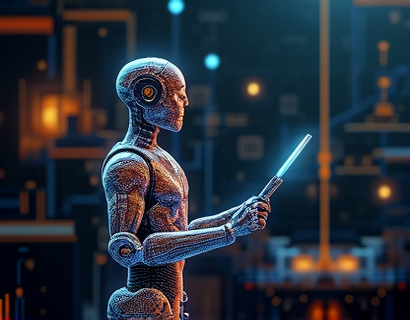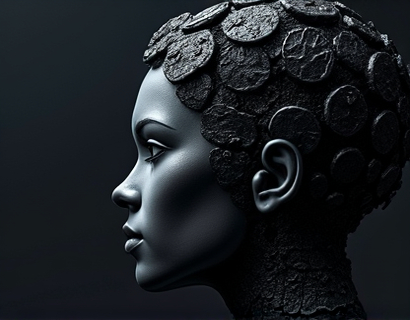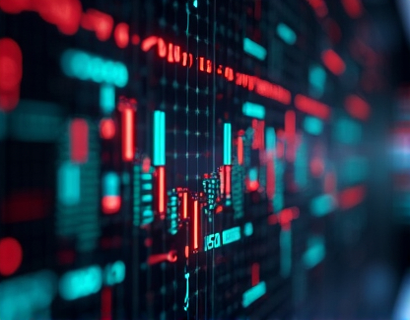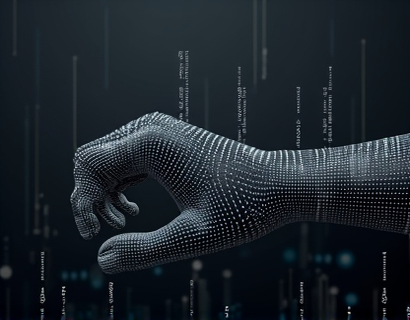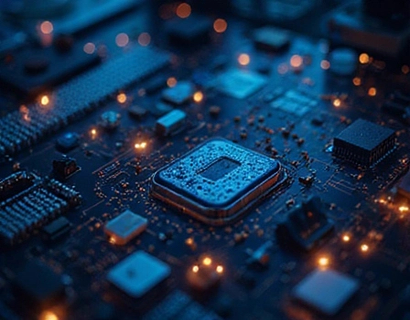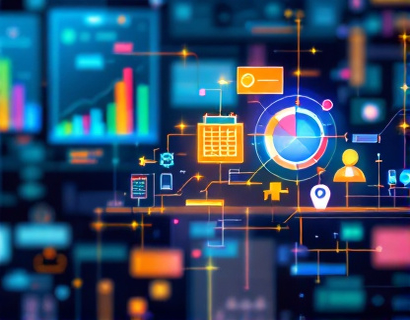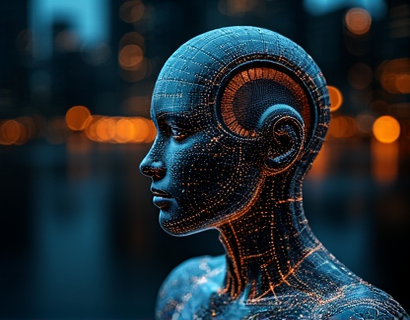Revolutionizing Digital Engagement: The Synergy of Crypto and AI
The intersection of cryptocurrency and artificial intelligence (AI) is giving rise to a new era of digital experiences, particularly for tech innovators and early adopters. This merging of technologies is not just about combining two advanced fields but about creating a synergy that transforms how we interact online, access applications, and manage digital assets. For those at the forefront of technological advancements, understanding this synergy is crucial to enhancing their online presence and leveraging cutting-edge solutions.
Understanding the Basics: Crypto and AI
To fully appreciate the impact of merging crypto and AI, it's essential to grasp the fundamentals of each technology. Cryptocurrency, a digital or virtual currency secured by cryptography, operates on a decentralized network known as a blockchain. This technology ensures transparency, security, and immutability in transactions, eliminating the need for intermediaries like banks.
Artificial intelligence, on the other hand, involves the simulation of human intelligence processes by machines, particularly computer systems. These processes include learning (the acquisition of information and rules for using it), reasoning (using rules to reach approximate or definite conclusions), and self-correction. AI's capabilities range from simple data analysis to complex decision-making and natural language processing.
When these two technologies converge, the potential for innovation becomes immense. The decentralized and secure nature of crypto provides a robust foundation for AI applications, while AI's analytical and predictive powers can optimize and enhance the functionality of blockchain-based systems.
The Transformative Impact on Digital Engagement
The combination of crypto and AI is revolutionizing digital engagement by offering more secure, efficient, and personalized online experiences. For early adopters and tech enthusiasts, this means access to advanced tools and platforms that streamline interactions and provide deeper insights into their digital activities.
One of the primary ways this synergy is manifesting is through decentralized applications (dApps). These applications run on blockchain networks and leverage AI to provide enhanced user experiences. For instance, AI-driven chatbots can offer real-time customer support within dApps, while machine learning algorithms can personalize content and recommendations based on user behavior and preferences.
Moreover, the use of smart contracts, self-executing contracts with the terms directly written into code, can be optimized with AI to automate and enforce agreements more efficiently. This reduces the risk of fraud and errors, making transactions smoother and more reliable.
Enhancing Online Presence with AI-Powered Crypto Solutions
For individuals looking to strengthen their online presence, the integration of AI in crypto offers powerful tools. One such tool is non-custodial wallets, which allow users to maintain full control over their private keys and assets. AI can enhance these wallets by providing predictive analytics for market trends, automating trading strategies, and offering real-time security alerts.
Another area where AI and crypto intersect is in digital identity verification. Traditional methods often involve cumbersome KYC (Know Your Customer) processes. AI-driven solutions can streamline this by using biometric data and machine learning to verify identities quickly and securely, all while maintaining compliance with regulatory standards.
Furthermore, AI can optimize the management of crypto portfolios. By analyzing vast amounts of data, AI algorithms can identify patterns, predict price movements, and suggest optimal buying and selling times. This not only helps in maximizing returns but also in mitigating risks associated with market volatility.
Streamlining Access to Innovative Applications
The synergy of crypto and AI is not only about enhancing existing digital experiences but also about creating new, innovative applications that were previously unimaginable. For tech innovators, this means access to a suite of tools that can accelerate development and deployment of cutting-edge solutions.
One such application is decentralized finance (DeFi), which leverages blockchain and AI to provide financial services without traditional intermediaries. AI can enhance DeFi platforms by improving risk assessment, fraud detection, and algorithmic trading. This results in more robust and user-friendly financial services that are accessible to a global audience.
Another innovative application is in the realm of digital content creation and distribution. AI can generate high-quality content, from articles to images and videos, which can be monetized on blockchain-based platforms. This not only democratizes content creation but also ensures that creators receive fair compensation through smart contracts.
Advanced Solutions for Tech Enthusiasts
For those deeply embedded in the tech community, the merging of crypto and AI offers advanced solutions that can significantly enhance their digital toolkit. One such solution is the development of decentralized autonomous organizations (DAOs), which use smart contracts to govern and manage collective projects. AI can optimize the decision-making processes within DAOs, ensuring more efficient and democratic governance.
Another advanced solution is the creation of AI-powered oracles, which serve as bridges between blockchain and external data sources. These oracles use AI to accurately fetch and provide real-time data to smart contracts, enabling more sophisticated and responsive applications.
Additionally, the field of augmented reality (AR) and virtual reality (VR) is being transformed by the combination of crypto and AI. AI-driven content can enhance immersive experiences, while blockchain ensures secure and transparent transactions within these virtual environments. This opens up new possibilities for gaming, education, and professional training.
Challenges and Considerations
While the potential benefits are substantial, the integration of crypto and AI also comes with challenges. Regulatory uncertainty remains a significant concern, as governments worldwide are still grappling with how to classify and regulate these emerging technologies. Early adopters and tech innovators must stay informed and adaptable to navigate this evolving landscape.
Technical complexity is another factor to consider. The convergence of crypto and AI requires a deep understanding of both fields, which can be daunting for those new to these technologies. However, the growing ecosystem of educational resources, communities, and tools is making it increasingly accessible.
Security is paramount in this space. While blockchain and AI enhance security, they also introduce new vulnerabilities. Users must implement best practices, such as using secure wallets, enabling two-factor authentication, and regularly updating their systems to protect against potential threats.
Conclusion
The merging of cryptocurrency and artificial intelligence is poised to transform digital experiences, offering advanced solutions that enhance online presence and streamline access to innovative applications. For early adopters and tech innovators, embracing this synergy can lead to unprecedented opportunities and efficiencies. As the technology continues to evolve, staying informed and proactive will be key to harnessing its full potential.











